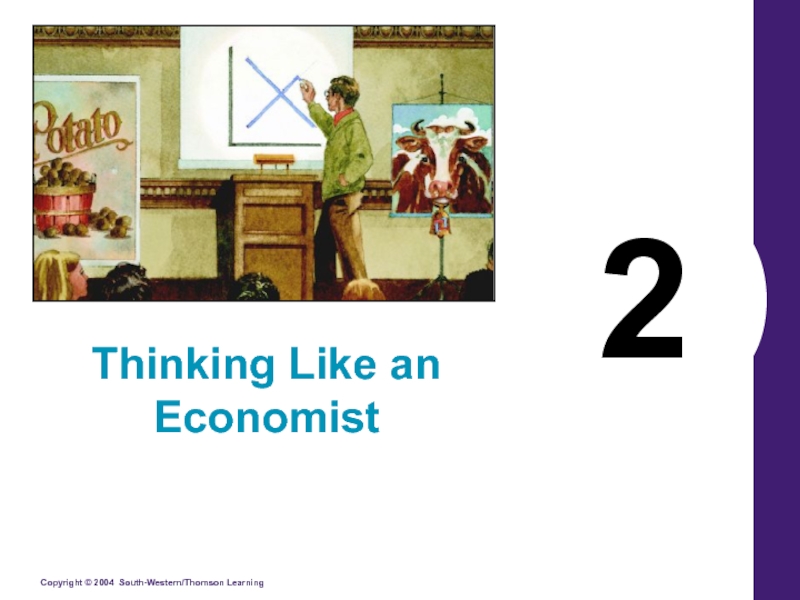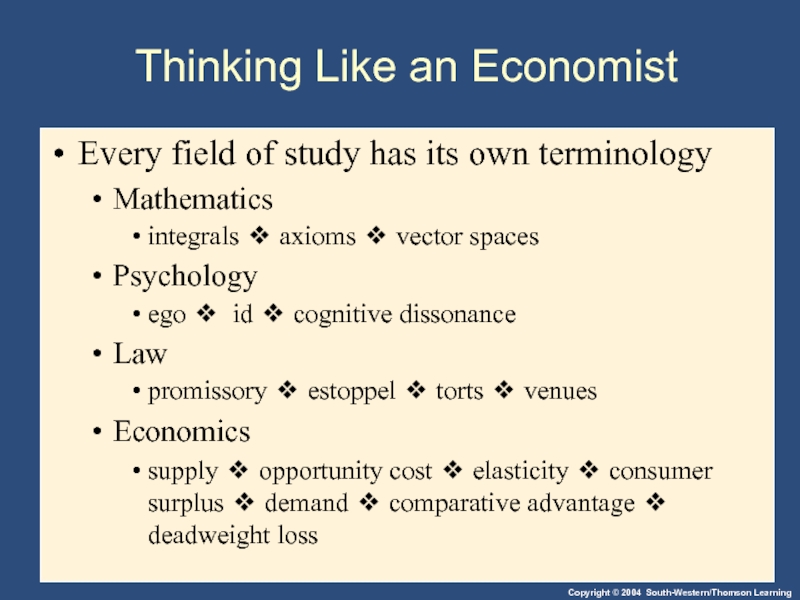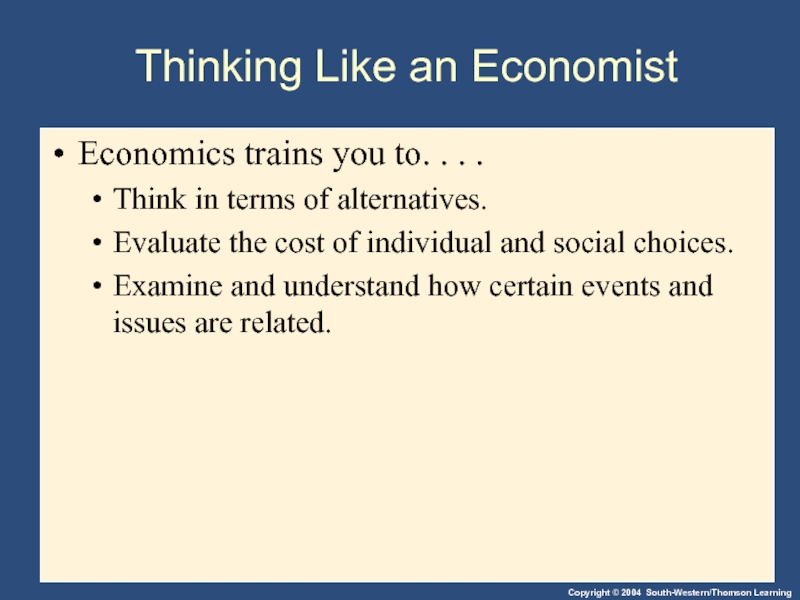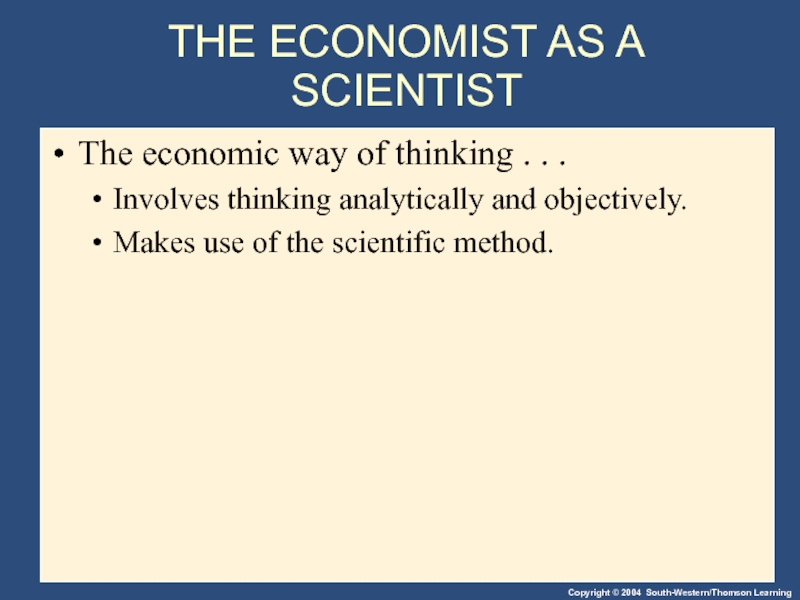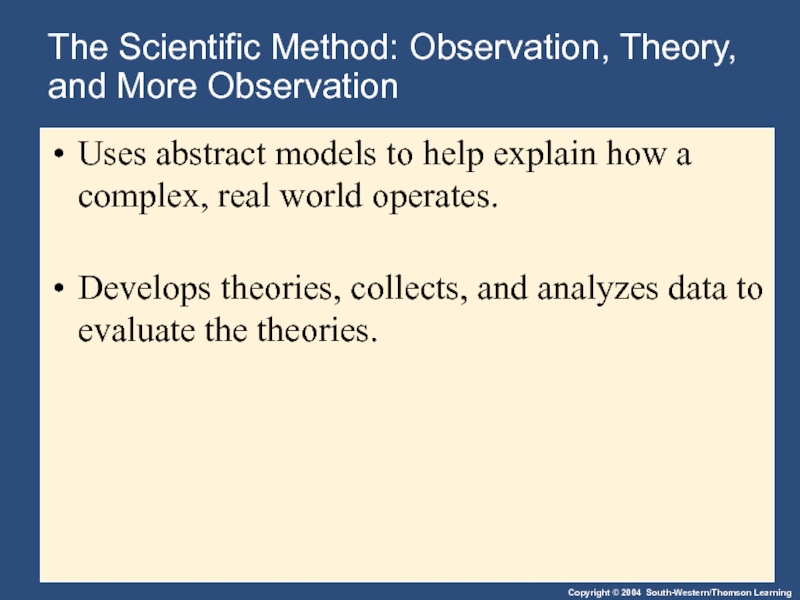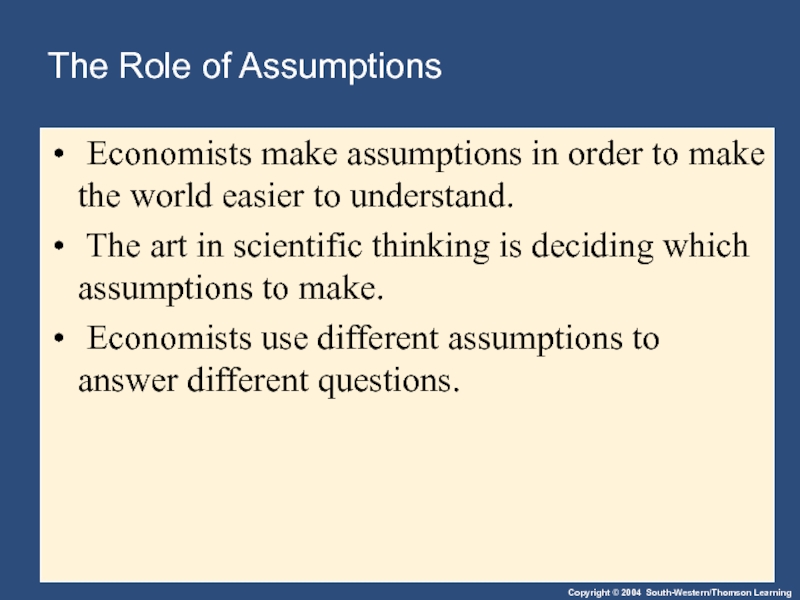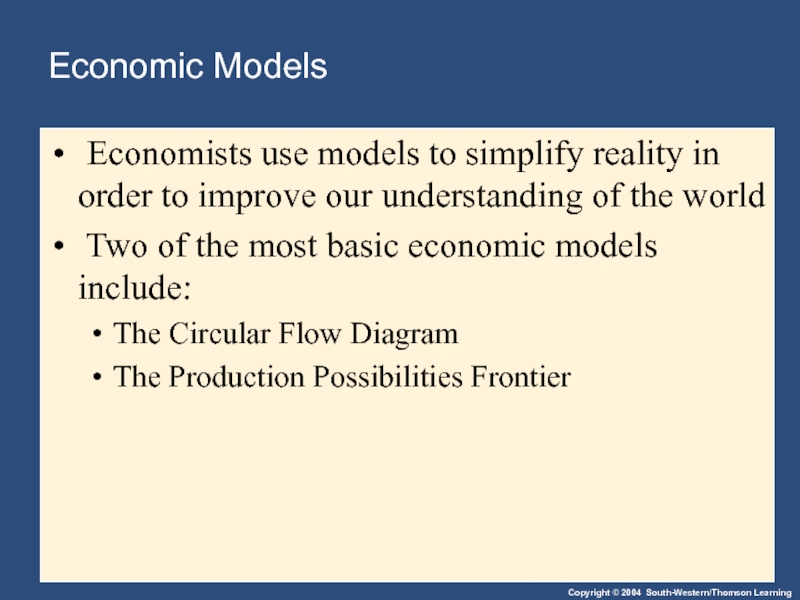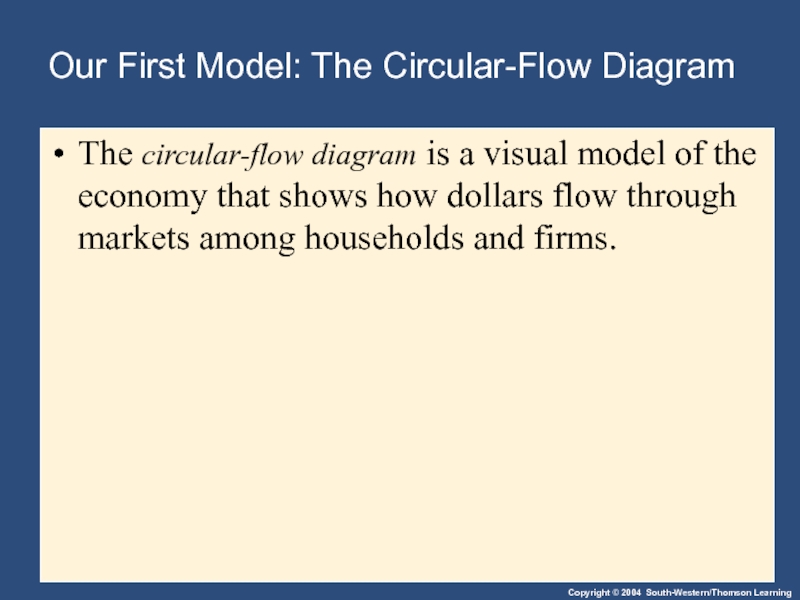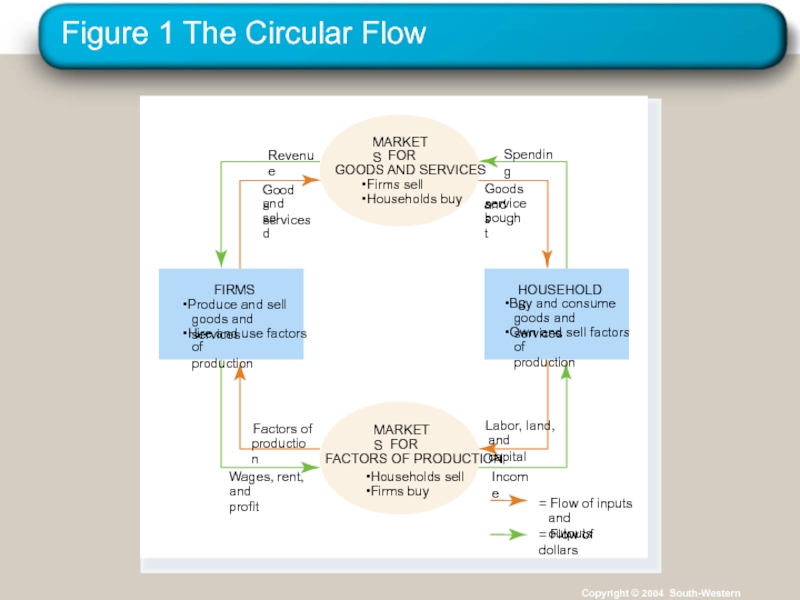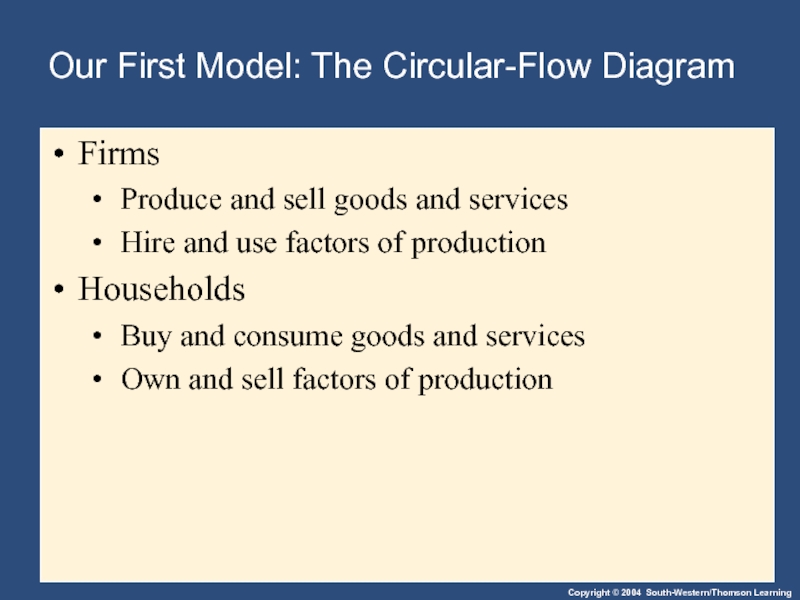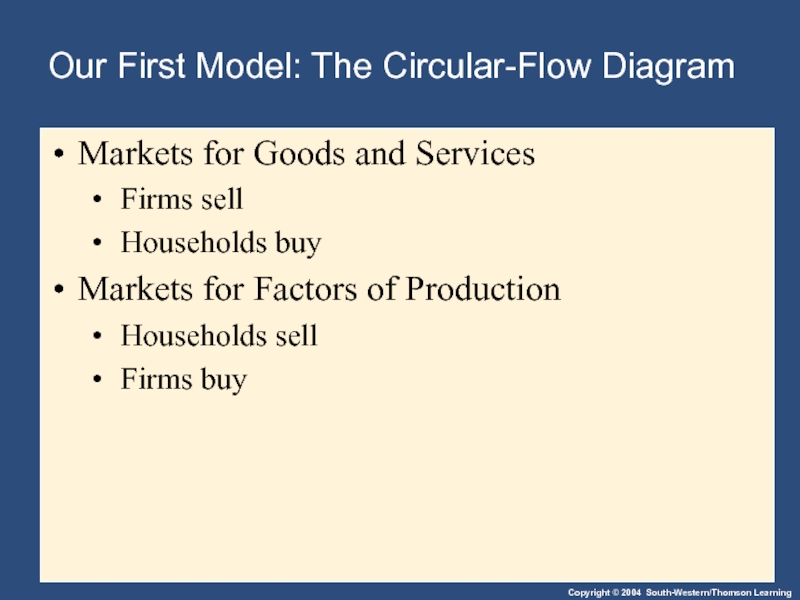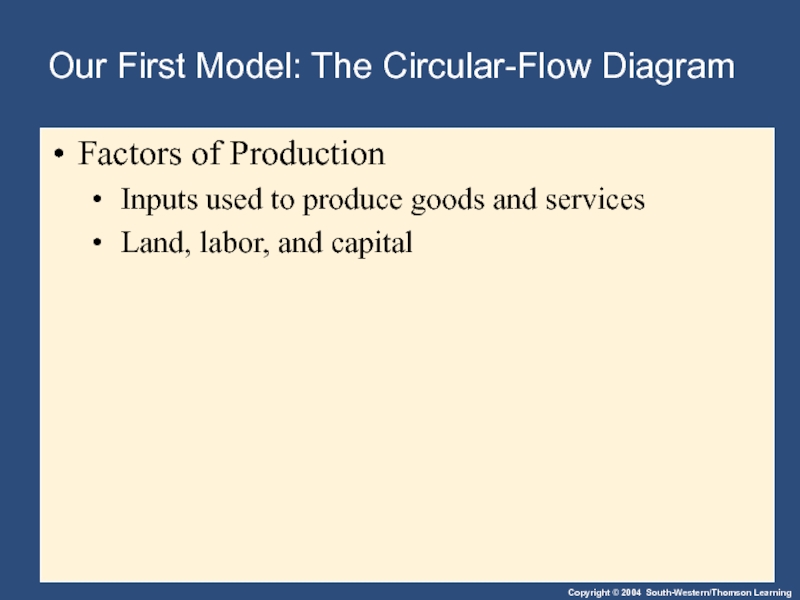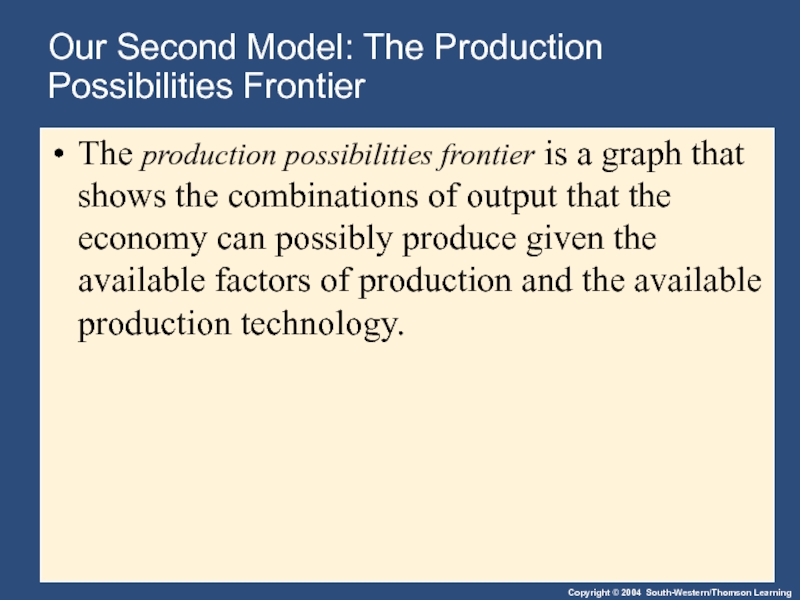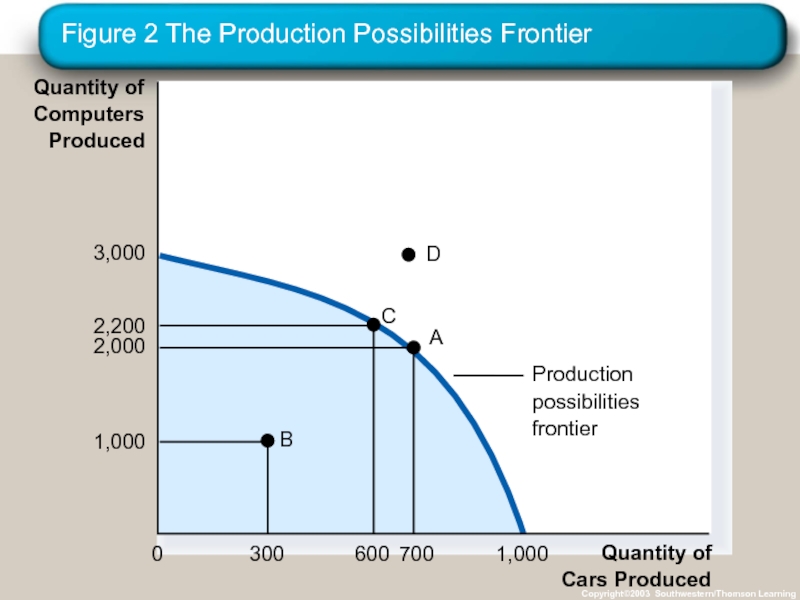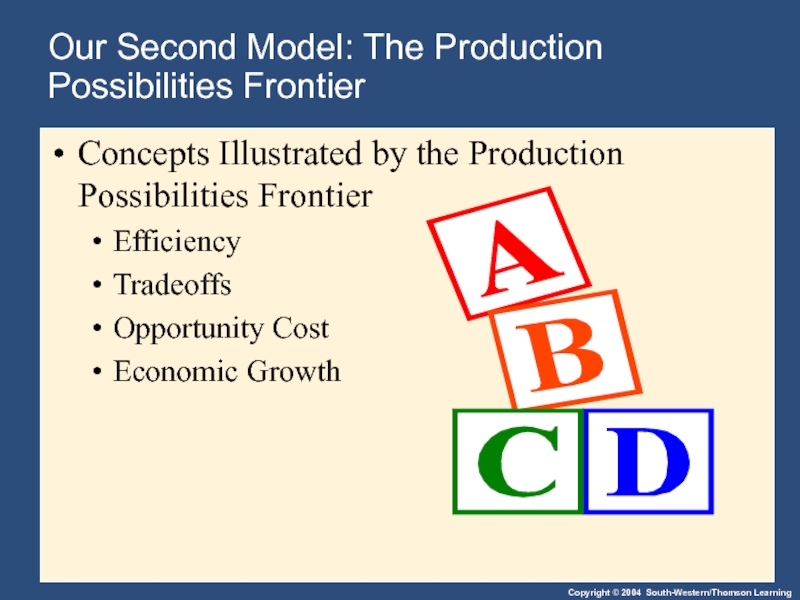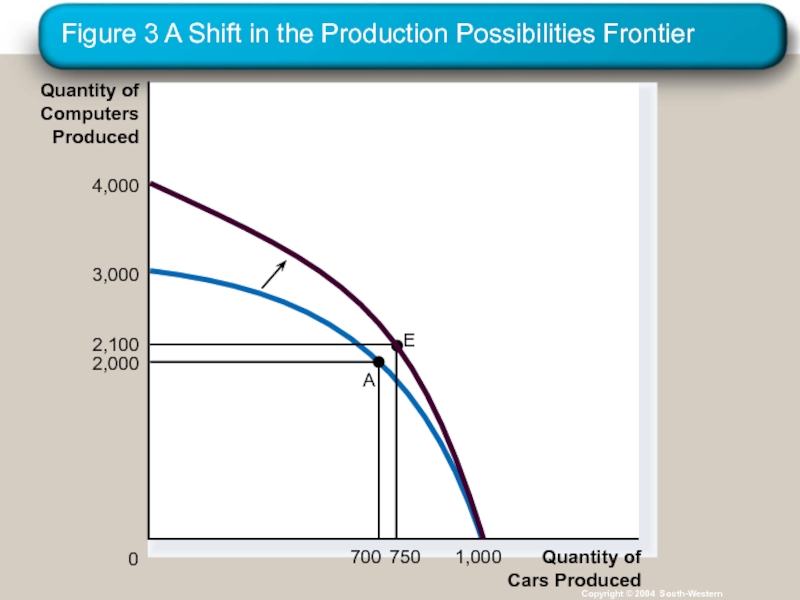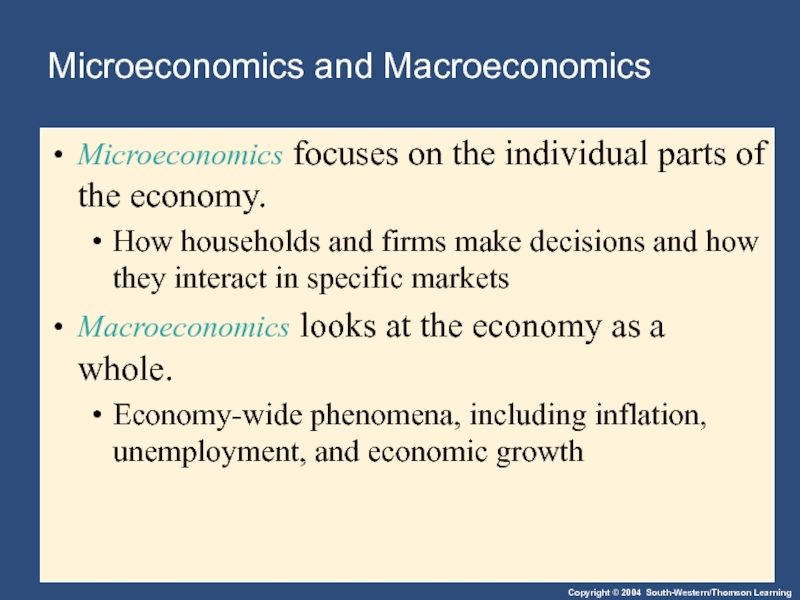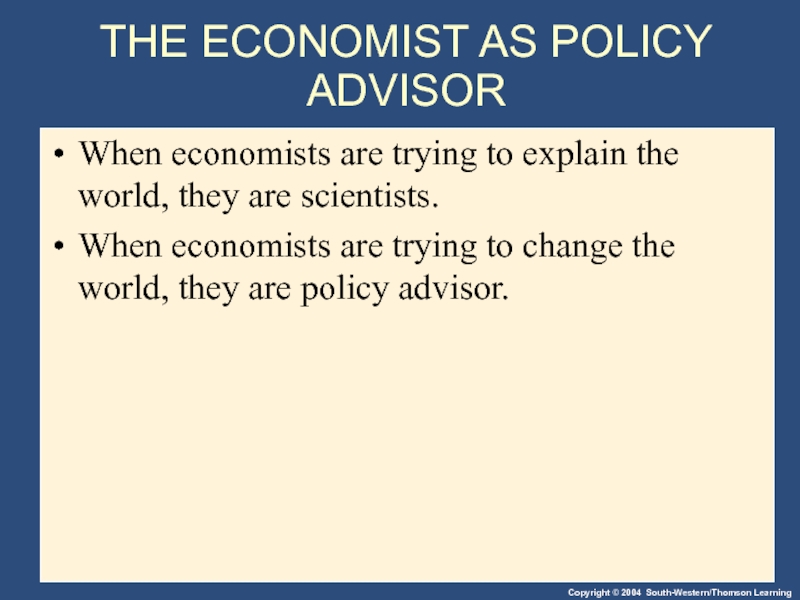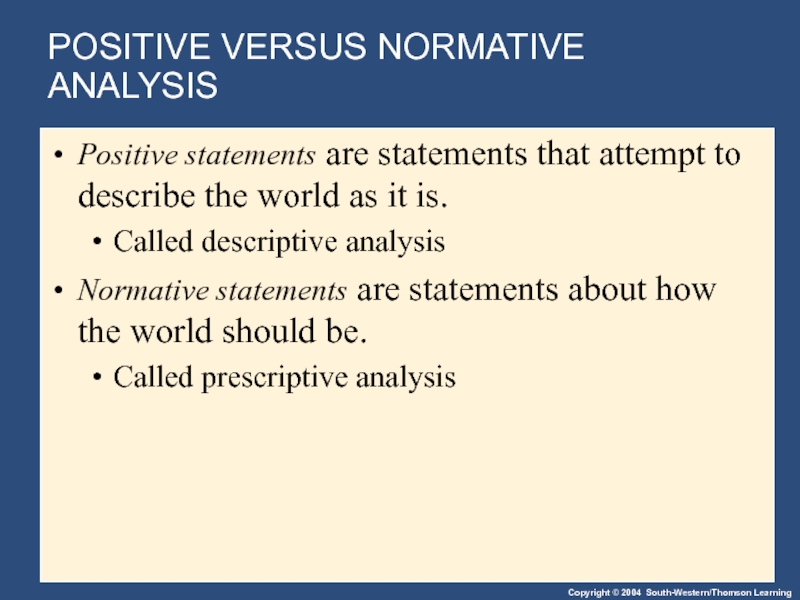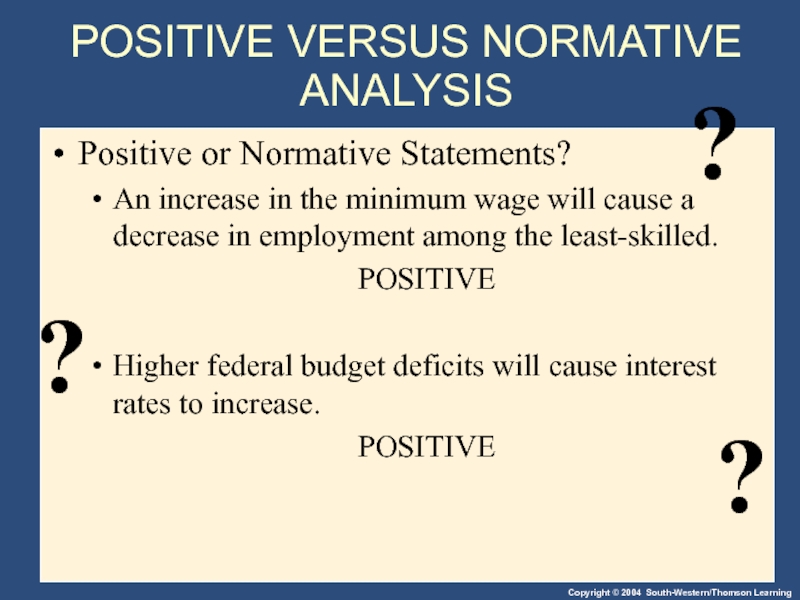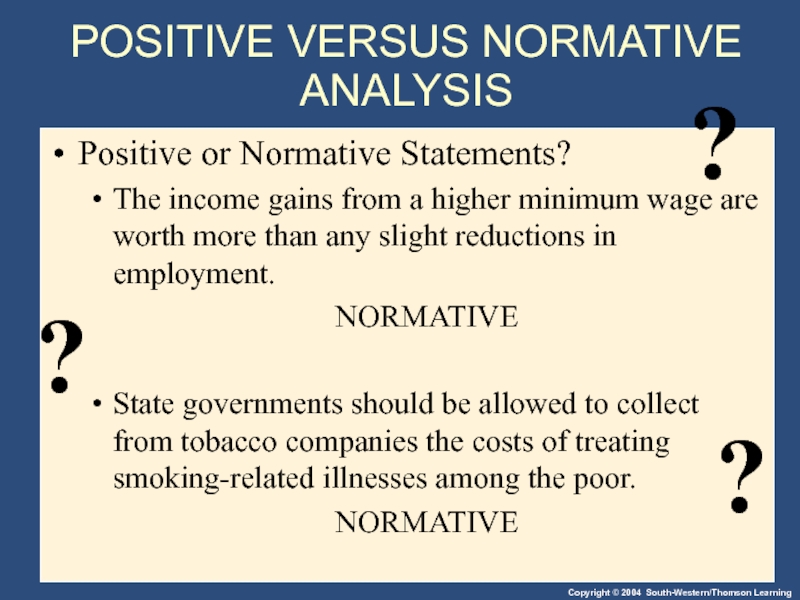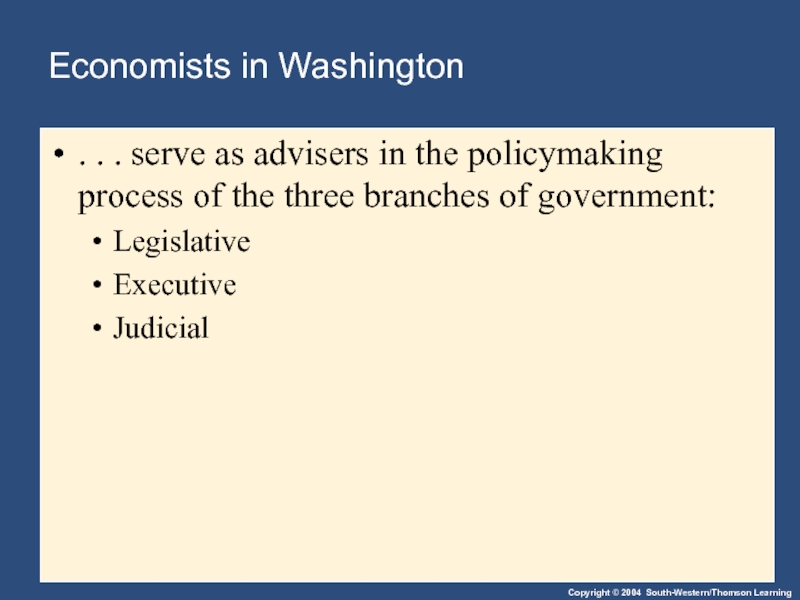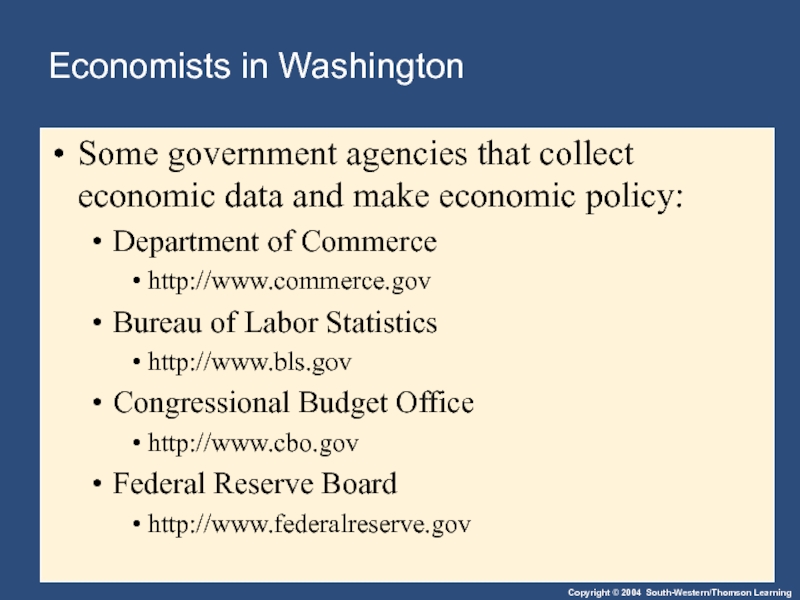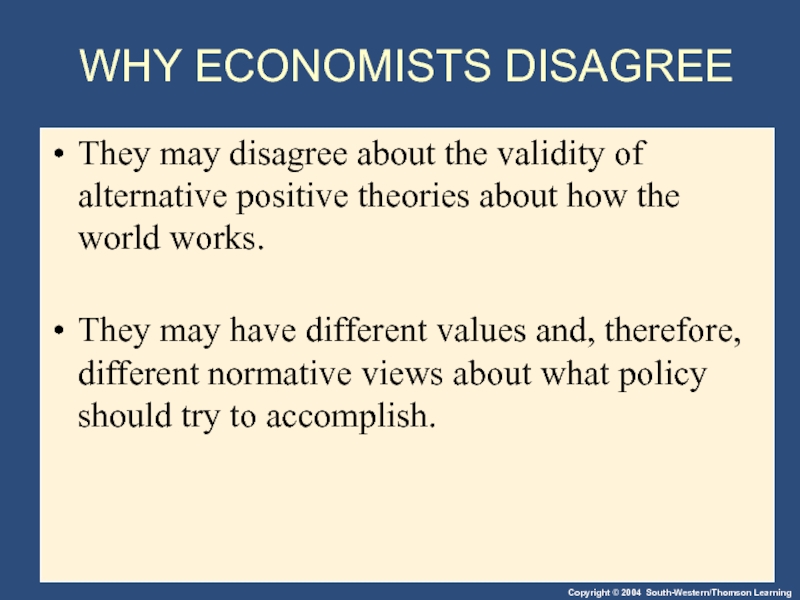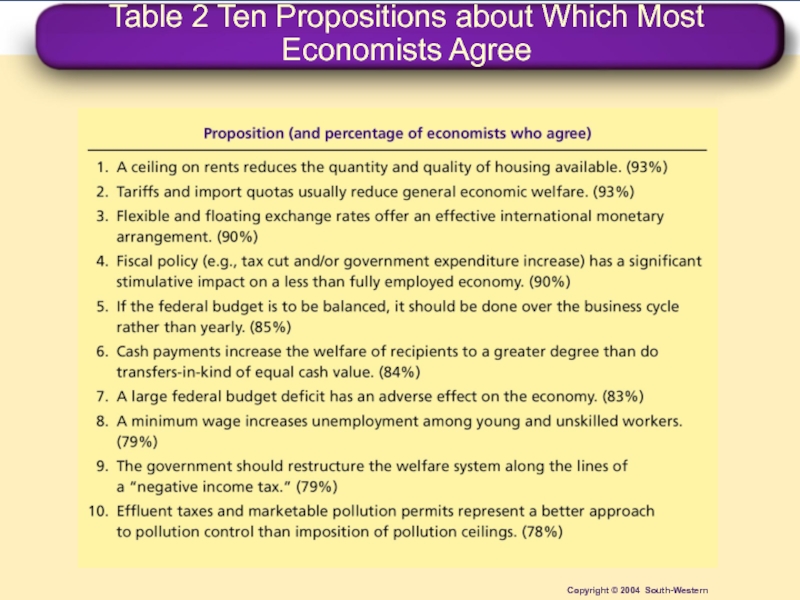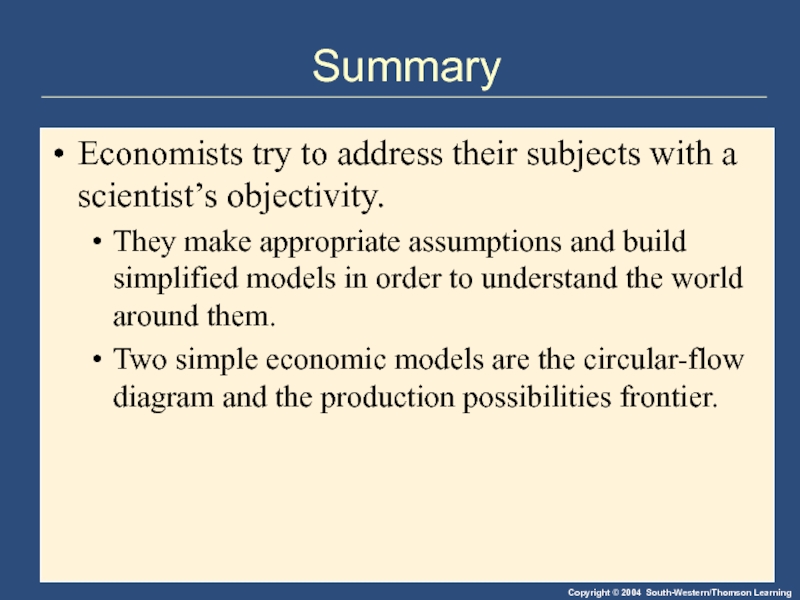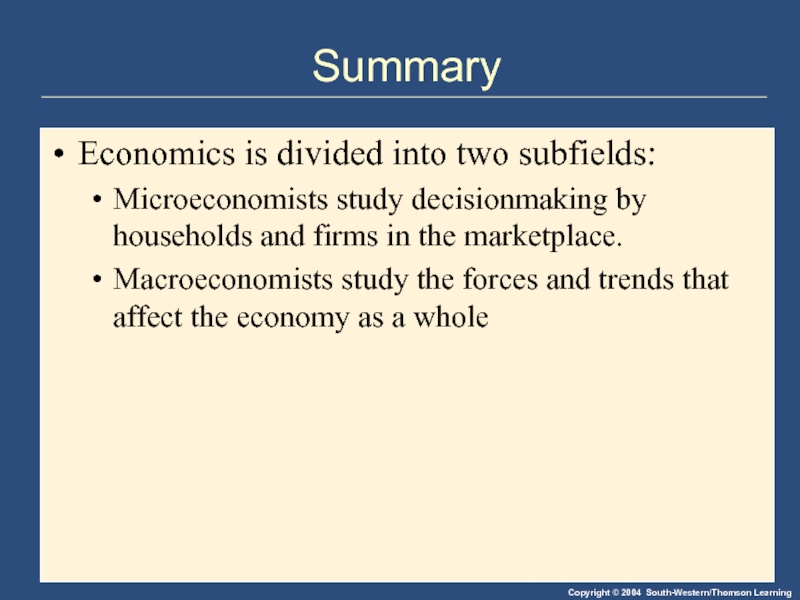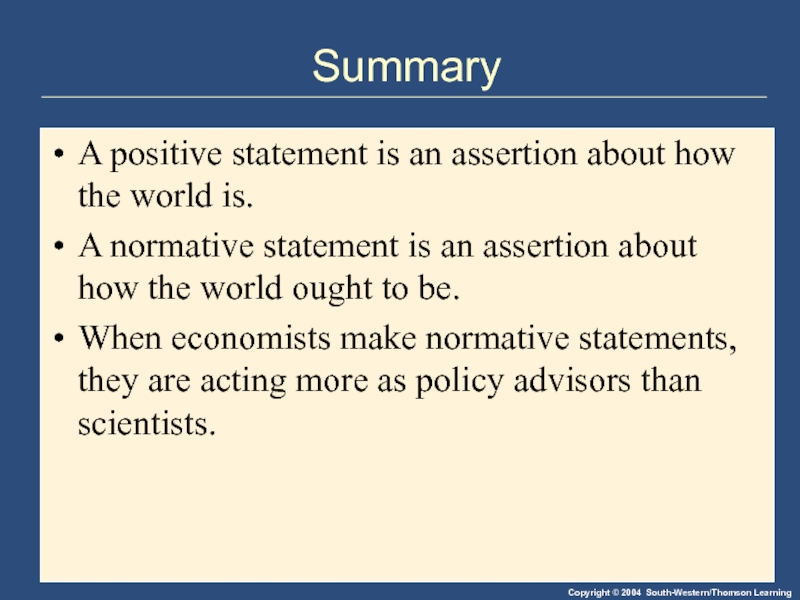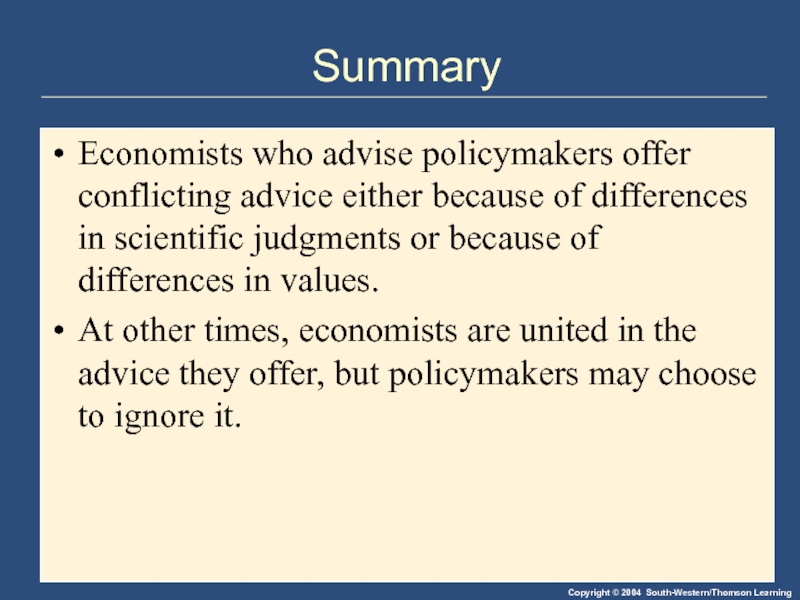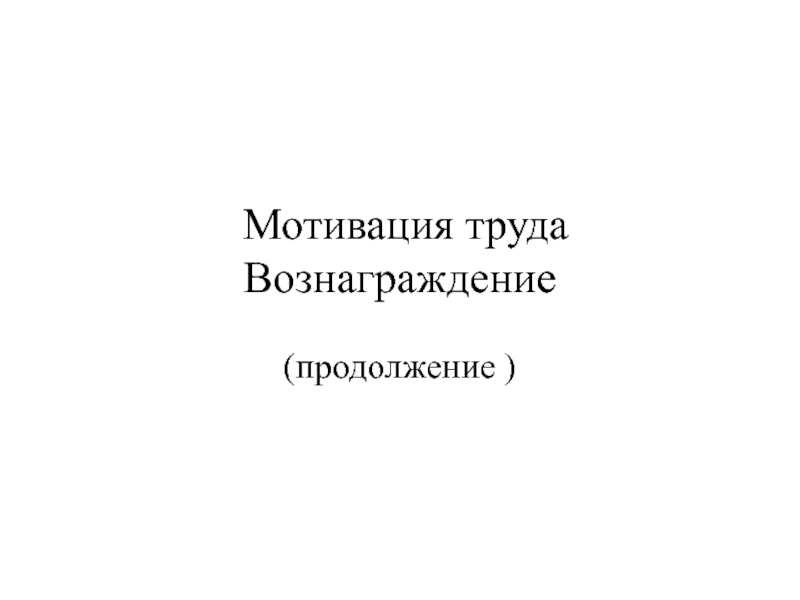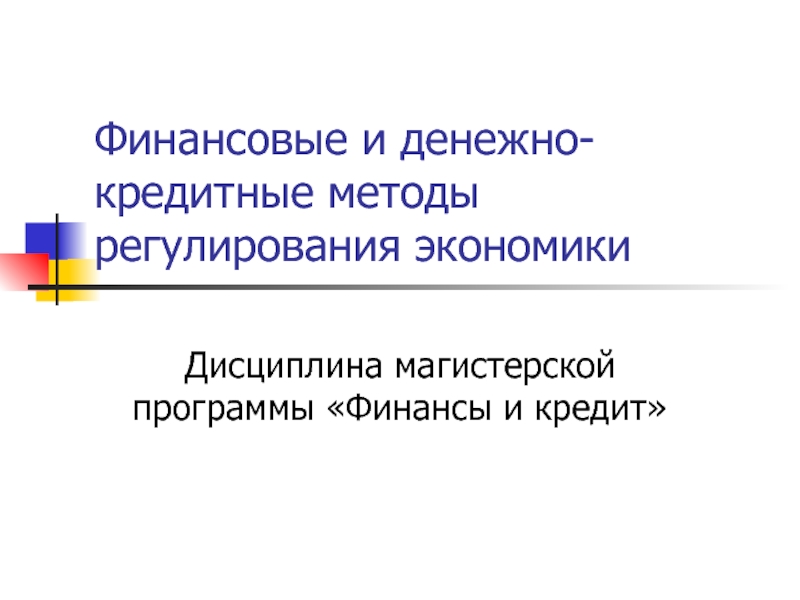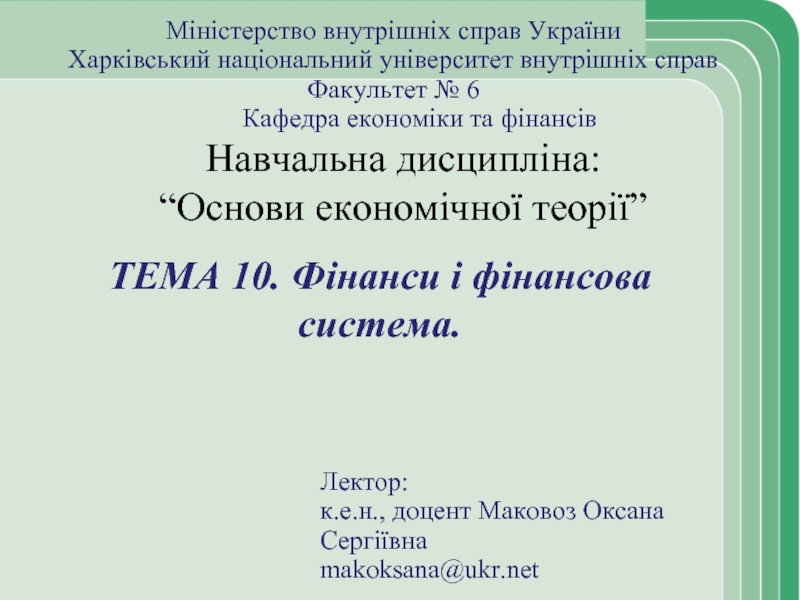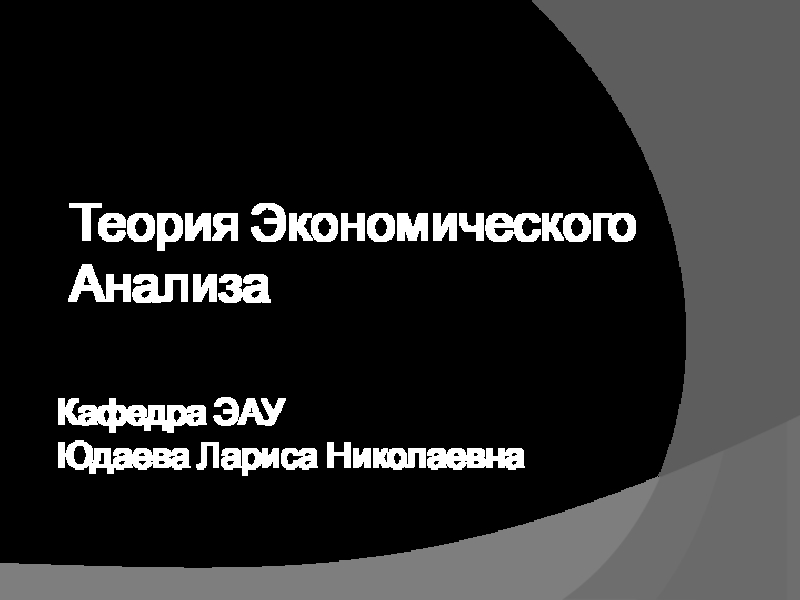- Главная
- Разное
- Дизайн
- Бизнес и предпринимательство
- Аналитика
- Образование
- Развлечения
- Красота и здоровье
- Финансы
- Государство
- Путешествия
- Спорт
- Недвижимость
- Армия
- Графика
- Культурология
- Еда и кулинария
- Лингвистика
- Английский язык
- Астрономия
- Алгебра
- Биология
- География
- Детские презентации
- Информатика
- История
- Литература
- Маркетинг
- Математика
- Медицина
- Менеджмент
- Музыка
- МХК
- Немецкий язык
- ОБЖ
- Обществознание
- Окружающий мир
- Педагогика
- Русский язык
- Технология
- Физика
- Философия
- Химия
- Шаблоны, картинки для презентаций
- Экология
- Экономика
- Юриспруденция
Thinking like an economist презентация
Содержание
- 1. Thinking like an economist
- 2. Thinking Like an Economist Every field of
- 3. Thinking Like an Economist Economics
- 4. THE ECONOMIST AS A SCIENTIST
- 5. The Scientific Method: Observation, Theory, and
- 6. The Role of Assumptions Economists make
- 7. Economic Models Economists use models to
- 8. Our First Model: The Circular-Flow Diagram
- 9. Figure 1 The Circular Flow Copyright ©
- 10. Our First Model: The Circular-Flow Diagram Firms
- 11. Our First Model: The Circular-Flow Diagram Markets
- 12. Our First Model: The Circular-Flow Diagram Factors
- 13. Our Second Model: The Production
- 14. Figure 2 The Production Possibilities Frontier Copyright©2003
- 15. Our Second Model: The Production
- 16. Figure 3 A Shift in the Production
- 17. Microeconomics and Macroeconomics Microeconomics focuses
- 18. THE ECONOMIST AS POLICY ADVISOR
- 19. POSITIVE VERSUS NORMATIVE ANALYSIS Positive
- 20. Positive or Normative Statements? An increase
- 21. Positive or Normative Statements? The income
- 22. Economists in Washington . .
- 23. Economists in Washington Some government
- 24. WHY ECONOMISTS DISAGREE They may
- 25. Table 2 Ten Propositions about Which Most Economists Agree Copyright © 2004 South-Western
- 26. Summary Economists try to address their subjects
- 27. Summary Economics is divided into two subfields:
- 28. Summary A positive statement is an assertion
- 29. Summary Economists who advise policymakers offer conflicting
Слайд 2Thinking Like an Economist
Every field of study has its own terminology
Mathematics
integrals
Psychology
ego ❖ id ❖ cognitive dissonance
Law
promissory ❖ estoppel ❖ torts ❖ venues
Economics
supply ❖ opportunity cost ❖ elasticity ❖ consumer surplus ❖ demand ❖ comparative advantage ❖ deadweight loss
Слайд 3
Thinking Like an Economist
Economics trains you to. . . .
Think
Evaluate the cost of individual and social choices.
Examine and understand how certain events and issues are related.
Слайд 4
THE ECONOMIST AS A SCIENTIST
The economic way of thinking . .
Involves thinking analytically and objectively.
Makes use of the scientific method.
Слайд 5
The Scientific Method: Observation, Theory, and More Observation
Uses abstract models to
Develops theories, collects, and analyzes data to evaluate the theories.
Слайд 6The Role of Assumptions
Economists make assumptions in order to make
The art in scientific thinking is deciding which assumptions to make.
Economists use different assumptions to answer different questions.
Слайд 7Economic Models
Economists use models to simplify reality in order to
Two of the most basic economic models include:
The Circular Flow Diagram
The Production Possibilities Frontier
Слайд 8
Our First Model: The Circular-Flow Diagram
The circular-flow diagram is a visual
Слайд 9Figure 1 The Circular Flow
Copyright © 2004 South-Western
Spending
Revenue
Income
= Flow of
and outputs
= Flow of dollars
Слайд 10Our First Model: The Circular-Flow Diagram
Firms
Produce and sell goods and
Hire and use factors of production
Households
Buy and consume goods and services
Own and sell factors of production
Слайд 11Our First Model: The Circular-Flow Diagram
Markets for Goods and Services
Firms
Households buy
Markets for Factors of Production
Households sell
Firms buy
Слайд 12Our First Model: The Circular-Flow Diagram
Factors of Production
Inputs used to
Land, labor, and capital
Слайд 13
Our Second Model: The Production Possibilities Frontier
The production possibilities frontier is
Слайд 14Figure 2 The Production Possibilities Frontier
Copyright©2003 Southwestern/Thomson Learning
Quantity of
Cars Produced
0
3,000
1,000
Quantity of
Computers
Produced
Слайд 15
Our Second Model: The Production Possibilities Frontier
Concepts Illustrated by the Production
Efficiency
Tradeoffs
Opportunity Cost
Economic Growth
Слайд 16Figure 3 A Shift in the Production Possibilities Frontier
Copyright © 2004
Quantity of
Cars Produced
0
Quantity of
Computers
Produced
Слайд 17
Microeconomics and Macroeconomics
Microeconomics focuses on the individual parts of the economy.
How
Macroeconomics looks at the economy as a whole.
Economy-wide phenomena, including inflation, unemployment, and economic growth
Слайд 18
THE ECONOMIST AS POLICY ADVISOR
When economists are trying to explain the
When economists are trying to change the world, they are policy advisor.
Слайд 19
POSITIVE VERSUS NORMATIVE ANALYSIS
Positive statements are statements that attempt to describe
Called descriptive analysis
Normative statements are statements about how the world should be.
Called prescriptive analysis
Слайд 20Positive or Normative Statements?
An increase in the minimum wage will
POSITIVE
Higher federal budget deficits will cause interest rates to increase.
POSITIVE
?
?
POSITIVE VERSUS NORMATIVE ANALYSIS
?
Слайд 21Positive or Normative Statements?
The income gains from a higher minimum
NORMATIVE
State governments should be allowed to collect from tobacco companies the costs of treating smoking-related illnesses among the poor.
NORMATIVE
?
?
POSITIVE VERSUS NORMATIVE ANALYSIS
?
Слайд 22
Economists in Washington
. . . serve as advisers in the policymaking
Legislative
Executive
Judicial
Слайд 23
Economists in Washington
Some government agencies that collect economic data and make
Department of Commerce
http://www.commerce.gov
Bureau of Labor Statistics
http://www.bls.gov
Congressional Budget Office
http://www.cbo.gov
Federal Reserve Board
http://www.federalreserve.gov
Слайд 24
WHY ECONOMISTS DISAGREE
They may disagree about the validity of alternative positive
They may have different values and, therefore, different normative views about what policy should try to accomplish.
Слайд 26Summary
Economists try to address their subjects with a scientist’s objectivity.
They make
Two simple economic models are the circular-flow diagram and the production possibilities frontier.
Слайд 27Summary
Economics is divided into two subfields:
Microeconomists study decisionmaking by households and
Macroeconomists study the forces and trends that affect the economy as a whole
Слайд 28Summary
A positive statement is an assertion about how the world is.
A
When economists make normative statements, they are acting more as policy advisors than scientists.
Слайд 29Summary
Economists who advise policymakers offer conflicting advice either because of differences
At other times, economists are united in the advice they offer, but policymakers may choose to ignore it.
